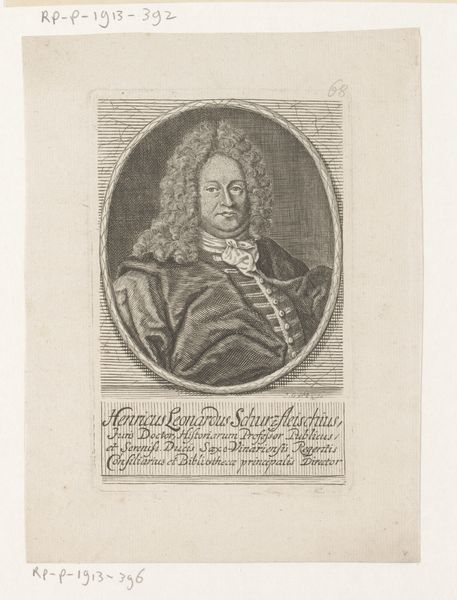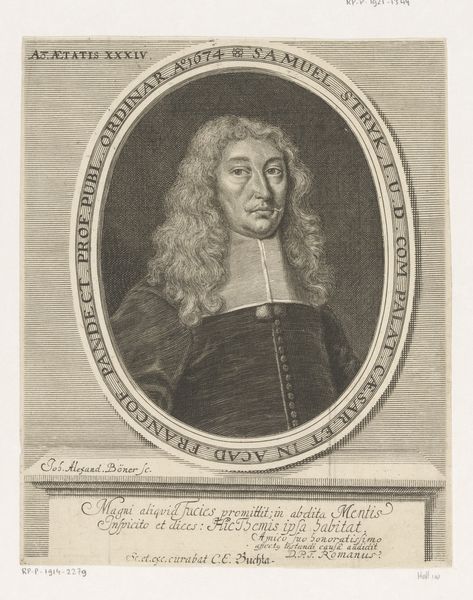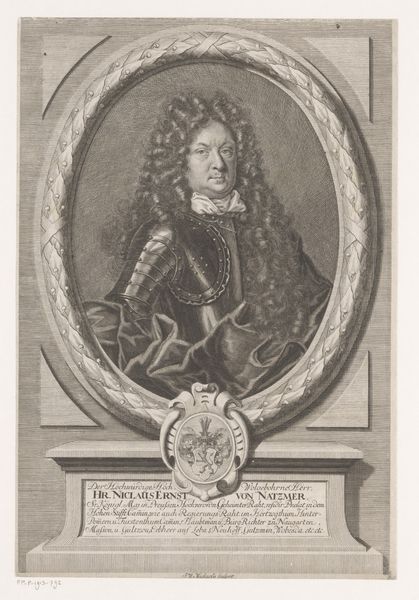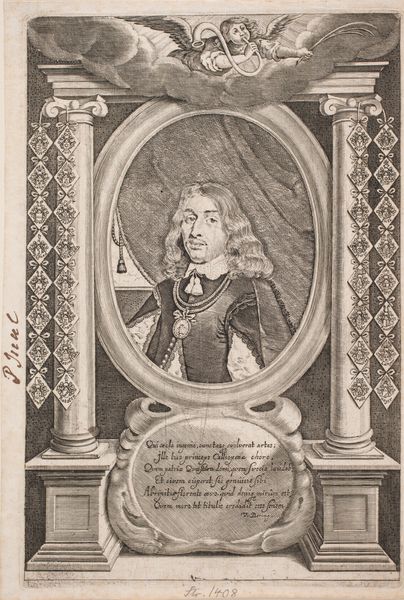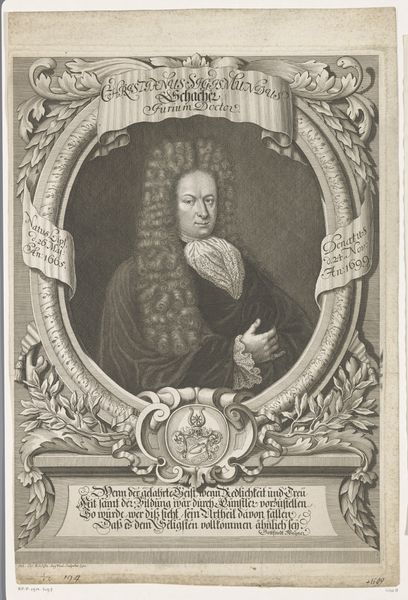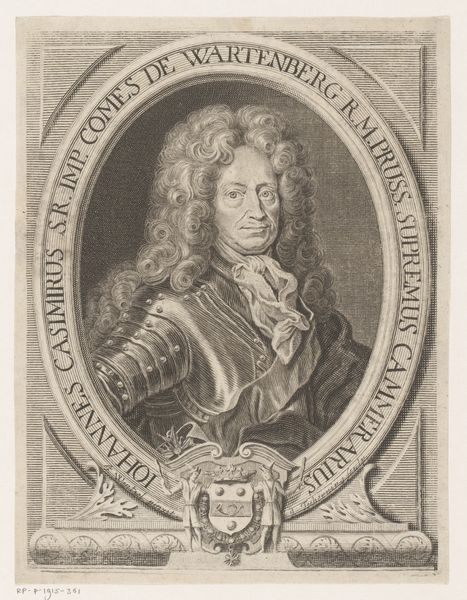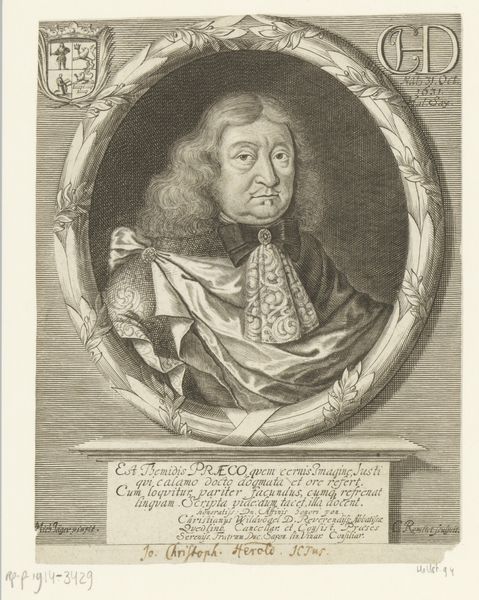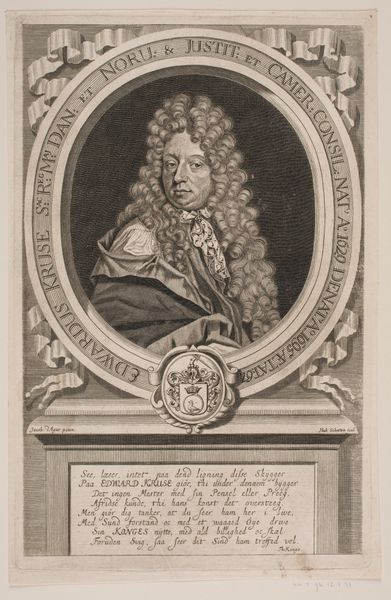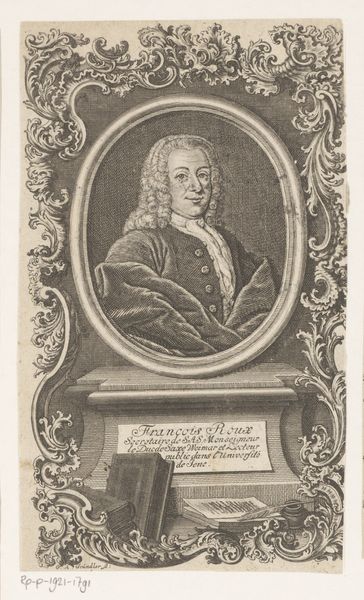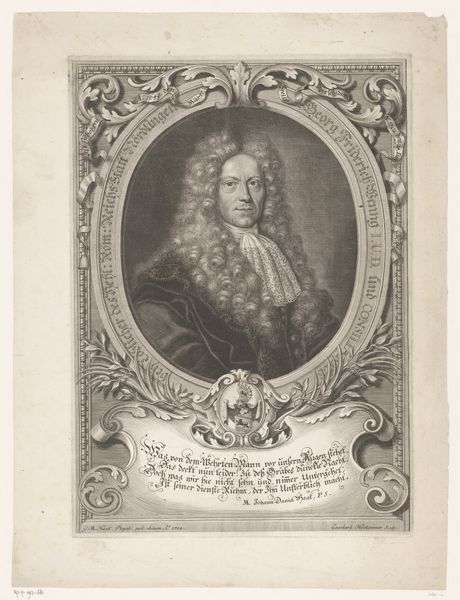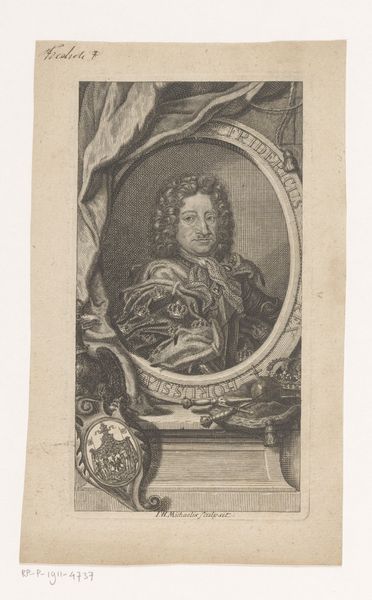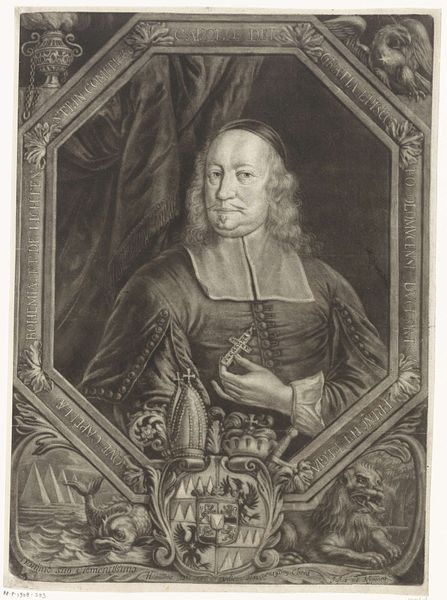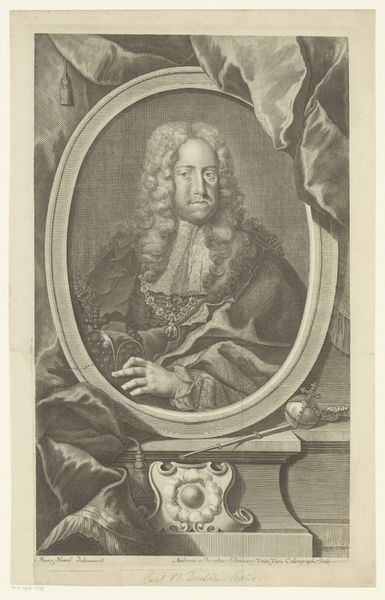
engraving
#
portrait
#
baroque
#
old engraving style
#
figuration
#
old-timey
#
19th century
#
line
#
history-painting
#
academic-art
#
engraving
Dimensions: height 138 mm, width 82 mm
Copyright: Rijks Museum: Open Domain
Editor: Here we have Johann Philipp Thelott's "Portret van Johann Weiß," an engraving from 1670 housed in the Rijksmuseum. The meticulous linework gives the portrait a serious, almost austere quality. What can you tell me about it? Curator: The very act of commissioning and creating this engraving, of meticulously rendering Johann Weiß, situates him within a specific power structure and reinforces social hierarchies of the 17th century. We must consider how this imagery participated in the construction of identity, shaping not just Weiß’s personal image, but also broader societal understandings of status and worth. What visual cues tell you about Weiß's position? Editor: I suppose the formality of his attire, and the inclusion of his coat-of-arms, indicate he was someone of importance and probably of high status? Curator: Exactly. And we must critically examine these markers of status. What does it mean to represent a person primarily through their association with power and privilege? How might the artistic choices in this portrait subtly reinforce existing inequalities? Think about the relationship between artistic patronage, the sitter's social standing, and the power dynamics at play. Whose voices and experiences might be marginalized or erased by this type of representation? Editor: So it's not just about admiring the artistic skill but thinking about who gets remembered and why. It also seems as if the framing gives off a scholarly vibe. Curator: Precisely. Consider also that portraiture of this kind has historically been dominated by images of white, European men. Where do you think these types of images place women, people of color, and other underrepresented groups in our understanding of history and achievement? Editor: It certainly prompts you to think beyond just what you see, to the narratives it creates. I appreciate your insight on that. Curator: And it's a good reminder to stay vigilant and critical. It gives you a better understanding about the power dynamics, representations and their societal impacts on gender, identity, and other societal considerations in that era.
Comments
No comments
Be the first to comment and join the conversation on the ultimate creative platform.
